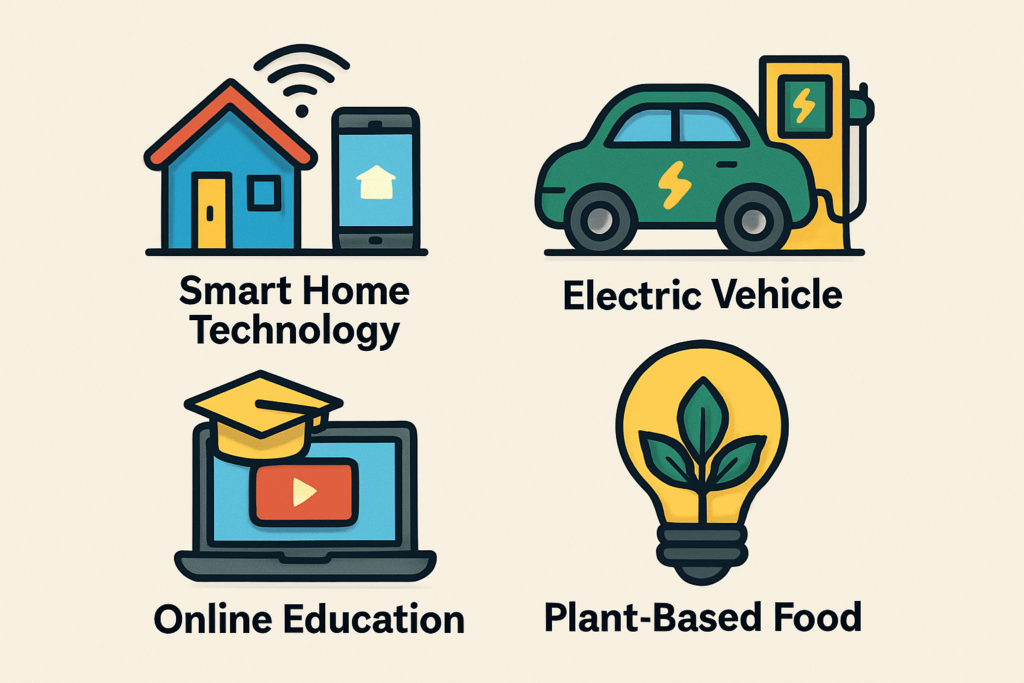How to Identify Market Gaps and Opportunities
- Why spotting gaps leads to success—less competition, more reward.
- Introduction of the primary keyword: market gap identification.
- Every blockbuster product started as a response to an unmet need.
How to Identify Market Gaps and Opportunities
Spotting market gaps isn’t just business jargon—it’s the origin story of every blockbuster product. Market gap identification means finding those pockets where customers want something, but nobody’s delivering. The reward? Less competition. More potential profit. Think about it: Airbnbs, meal kits, ride-shares—they all succeeded because founders saw what was missing and filled it. If you want your business to pack some real punch, train yourself to see gaps before others do. Almost every new industry star got big by picking up on what everyone else missed. That could be you—just start spotting what people wish they had, and what’s oddly hard to find.
What Is a Market Gap?
A market gap is as straightforward as it gets—a missing product, service, or feature that customers want but can’t find. It’s the space between what people need and what they can actually buy right now. That’s where opportunity lives.
For example, look at the tech world: before the iPad, there was a clear absence of user-friendly tablets. Retail? Consider Dollar Shave Club, which spotted that buying razors was overpriced and inconvenient, and then filled that gap with subscriptions. In services, Airbnb jumped on the unmet need for flexible, affordable lodging.
Finding unmet needs is about noticing what frustrates people, what’s clunky, or what simply doesn’t exist yet. When you nail it, you’re not just launching something new—you’re bringing relief to people who’d been waiting for it all along. That’s the heart of market gap identification.
Step 1: Start With Sharp Market Research
Forget guesswork—market gap identification starts with hard data. Real insights come from knowing what your audience wants and where current solutions fall short. Start by skimming product reviews and diving into forums. Pay close attention to what customers complain about or wish they had; this is ground zero for finding unmet needs.
Surveys are your next weapon. Keep questions short, but dig deep: What’s missing in your experience? What do you wish was easier? Responses can uncover frustrations you never considered. Next, turn a sharp eye to competitor analysis. What are their five-star products not delivering? Look for patterns in the low-star reviews. If lots of users say, “too complicated” or “doesn’t do X,” you’ve just found a gap.
Don’t ignore social listening. Monitor hashtags, comments, and subreddit threads in your niche. Sometimes, the golden insight is buried in a throwaway line or meme. People say what they want online, often louder than they do in surveys. Market research isn’t glamorous, but it’s necessary—and the more you dig, the cleaner your map of the opportunities ahead.
Step 2: Opportunity Discovery in Everyday Life
Spotting market gaps doesn’t require an MBA or fancy software. Sometimes, it’s as simple as paying attention. When your friend gripes about a fridge that never tells you what’s running low, or you’re stuck using an app that’s barely changed in years, that’s your cue. People complain for a reason—listen up.
Start asking folks what bugs them about their daily routines. Watch how they use products, where they struggle, or what hacks they invent to “make it work.” Trends on TikTok or Reddit threads griping about annoyances? Gold mine. Keep a simple note on your phone. Every time you or someone else mutters, “there should be a better way,” write it down.
Don’t do this alone. Grab a couple of creative people and throw a problem (or ten) on a whiteboard. Bounce wild ideas—sometimes the most offbeat suggestions are the ones with real legs. If you want more structure, try techniques like SCAMPER (Substitute, Combine, Adapt, Modify, Put to other uses, Eliminate, Reverse) from these creative thinking techniques. The point: opportunity discovery thrives on real-world frustration and a willingness to see every problem as a potential product.
In summary, winning the lottery can transform lives both positively and negatively. The way winners manage their newfound wealth—through careful planning, financial responsibility, and charitable contributions—can determine not only their personal financial future but also the broader legacy they leave behind.
Step 4: Keep Your Radar On
Market gaps aren’t static—they pop up, shift shape, and sometimes close faster than you’d expect. The trick is to stay vigilant. Watch for changes in technology (think: new devices, faster software, AI breakthroughs). Keep an eye on things like regulations and policies too, since a new law can suddenly make an old problem relevant again.
Browse forums, check out what’s hot on app stores, and dig into trend reports. Customers change their minds often, and friction points today may be different tomorrow. This isn’t about relentless monitoring—it’s about picking up on patterns, outliers, and complaints that get repeated. The winners keep their ears to the ground and their thinking flexible. That’s how you stay ready to spot—and jump on—the next real opportunity.
What Happens After Winning Millions?
Winning a life-changing lottery jackpot is every player’s dream, but few are prepared for what comes next. The sudden influx of wealth can bring excitement, but also a wave of challenges. Many winners find themselves overwhelmed by financial decisions, from managing taxes to making smart investments. Some handle it well, while others struggle with reckless spending that drains their fortune faster than expected.
The Financial Reality of Winning
Winners face critical financial decisions almost immediately:
- Taxes and Legal Issues
- A large portion of the winnings is typically required for taxes.
- Failing to plan can lead to legal complications.
- Investing vs. Spending
- Some winners hire financial advisors to ensure long-term security.
- Others might spend impulsively without a clear plan.
- Budgeting for the Future
- Proper money management is crucial; even large jackpots can disappear.
A Lifestyle Overhaul
A sudden fortune changes life in many ways:
- Luxury Purchases
- Mansions, sports cars, and extravagant vacations become affordable.
- Social Pressure
- Friends and distant relatives may reappear, expecting a share of the winnings.
- Privacy Challenges
- Some winners struggle with unwanted attention and public scrutiny.
While some winners embrace their wealth openly, others choose to live discreetly to avoid pressure and expectations.
Giving Back and Creating a Legacy
For some, wealth is not just about personal luxury—it’s an opportunity to make a difference:
- Charitable Contributions
- Many winners donate to charities and community projects.
- Supporting Education
- Funding scholarships and education initiatives is a common choice.
- Business Investments
- Investing in businesses can create jobs and opportunities for others.
Some lottery winners transition from players to philanthropists, demonstrating that wealth can be used for lasting impact. However, not all stories have happy endings; many who fail to manage their winnings properly find themselves bankrupt within years.
Deeper Learning
Ready to push past the basics? Dig into this resource on market gap analysis. It’s packed with step-by-step breakdowns and real-world examples for sharpening your skills. Take time to follow up on footnotes, case studies, and actionable frameworks—it’s the difference between surface-level knowledge and true expertise. The more you study how others find unmet needs, the easier it gets to spot opportunities in your field. Knowledge is leverage. Use it.
Conclusion
Market gap identification isn’t a box you check once and forget about. It’s a habit, almost a mindset. The business landscape shifts, customers get pickier, and fresh gaps crack open all the time. Winners? They spot these changes early, doing just enough research to see the truth and bold enough to take the shot.
So keep it simple: observe, ask questions, test fast, and never assume. The big breakthroughs aren’t from convoluted masterplans—they’re from sharp eyes, clear thinking, and the guts to act on what you see. Stay alert, travel light, and you’ll find the gaps the world’s still missing.




